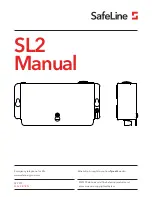
Chapter 2
Introduction to SISO Design
Xmath Interactive Control Design Module
2-14
ni.com
contains variable edit boxes for the value of the pole or zero (the real and
imaginary part when the pole or zero is complex) and, if appropriate, its
multiplicity. After you enter new values, you can select
OK
, which will
make the changes and dismiss the dialog box, or
Cancel
, which will
dismiss the dialog box without making the changes.
The values you type in will not be accepted if they are invalid—for
example, a negative multiplicity for a pole or zero.
Editing Poles and Zeros Graphically
The easiest way to change a pole or zero is to grab it by clicking the left
mouse button and dragging it to the desired location. You can only drag
poles and zeros in “sensible” ways. For example, you cannot drag a single
real pole or zero off the real axis to a complex location. More precisely, the
dragging of poles and zeros works as described in the following sections.
Complex Poles and Zeros
If the pole or zero that you grab is complex, then the complex conjugate
pole or zero will automatically move as required. In this case you can drag
the pole or zero in any direction.
Isolated Real Poles and Zeros
If the pole or zero that you grab is real and not very close to another real
pole or zero, then the pole or zero motion will be constrained to the real
axis. You cannot drag the pole or zero off the real axis.
Nonisolated Real Poles and Zeros and Almost Real
Pairs
If a pair of nearby poles or zeros is very near the real axis—that is, two
nearby real poles or zeros, or a pair of complex poles and zeros with very
small imaginary part—then the dragging motion will depend on how you
originally drag the poles or zeros. If you drag it up or down, then the pair
acts as a complex pair and there is no constraint on how you can drag it. For
example, two real poles that are very close to each other can be split into a
complex pair by grabbing either one and dragging it away from the real
axis. On the other hand, if you drag the selected pole or zero left or right,
then the pair act as a real pair—the selected pole or zero then can be
dragged only along the real axis, and the other pole or zero becomes real
















































